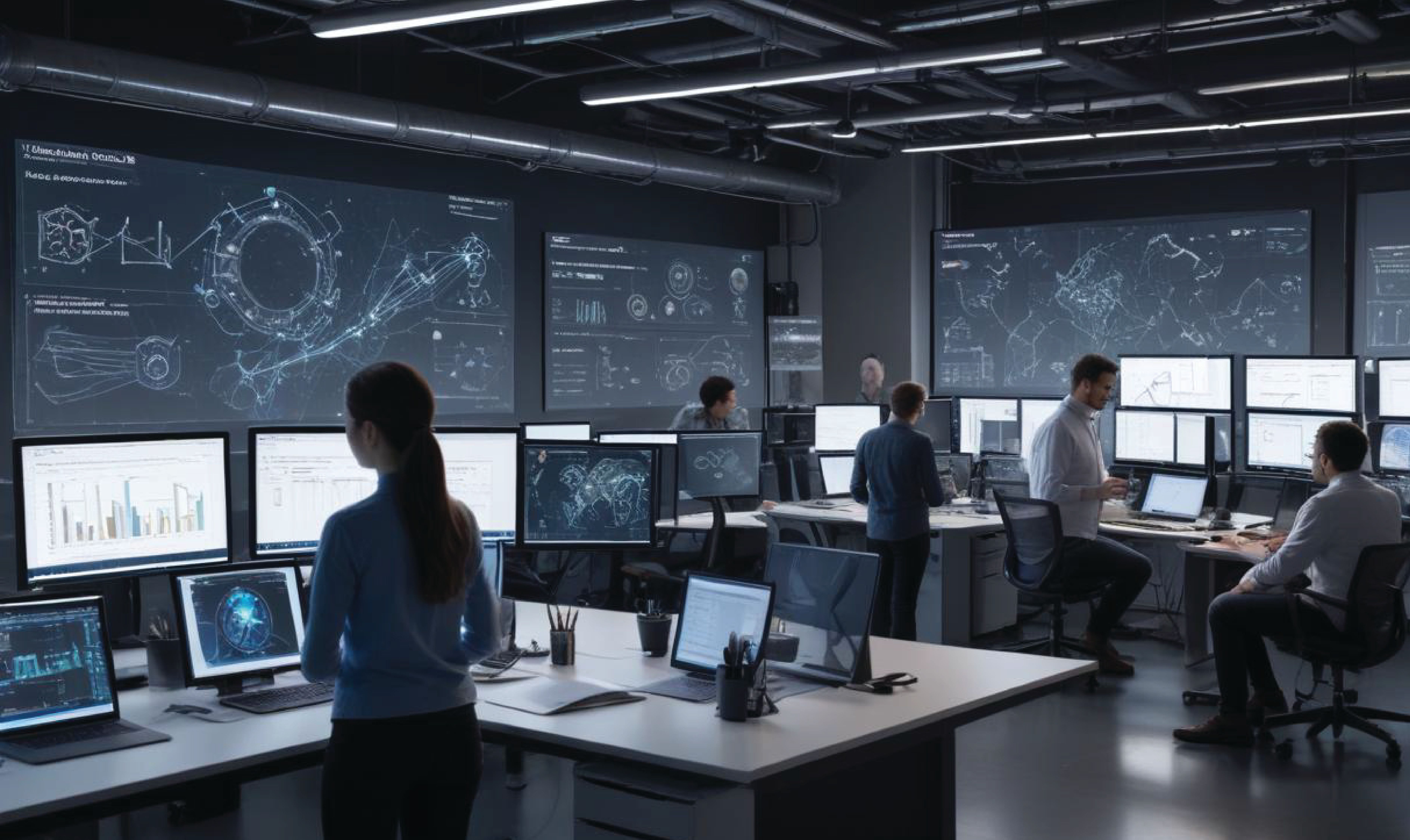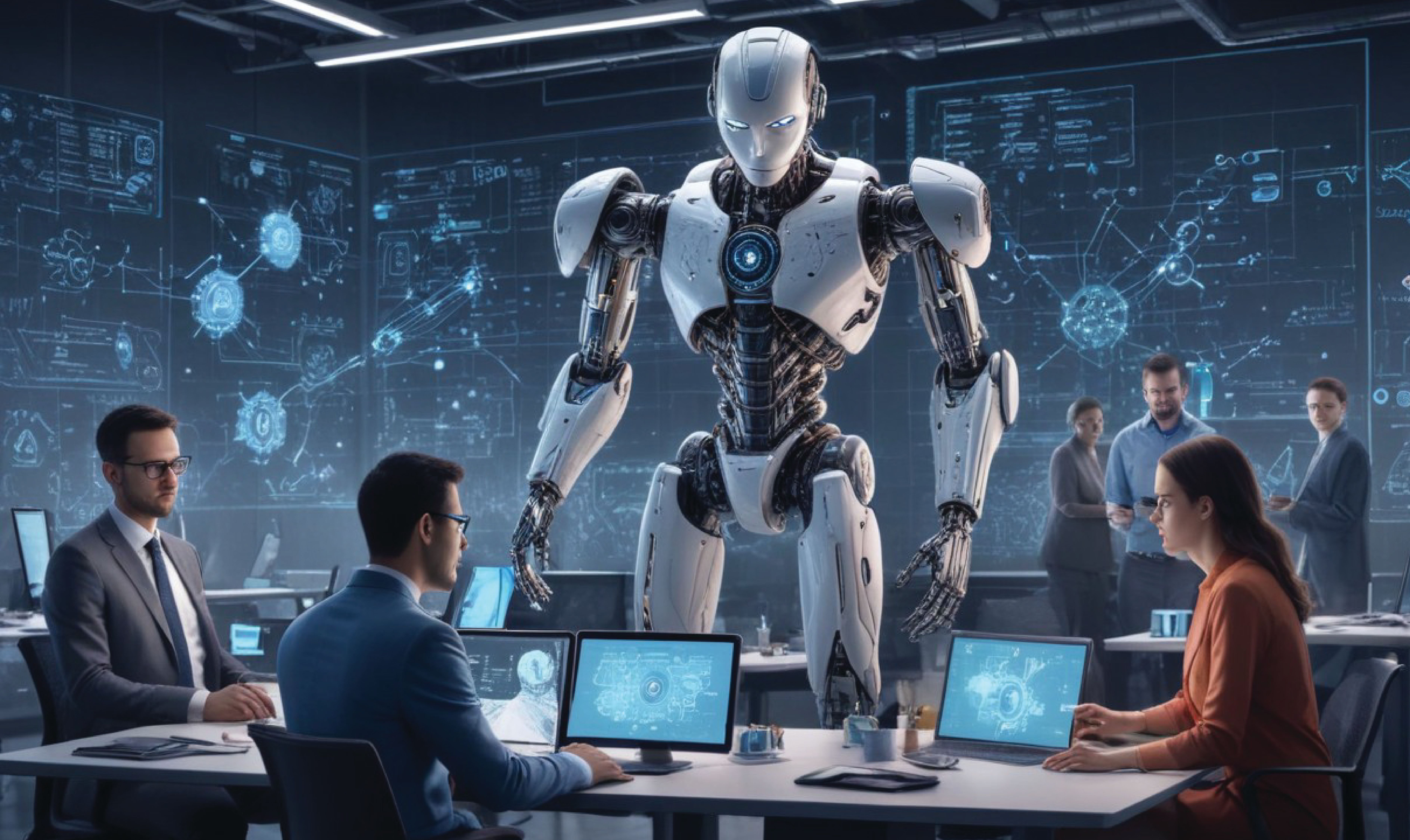This Holistic Approach Combines Two Complementary Practices:
AI and machine learning tools are rapidly advancing and changing how humans live and work. These AI and machine learning tools have the potential to blend human and machine intelligence to manage complex systems. Therefore, ensuring responsible development and testing of AI software products is crucial for building trust, mitigating risks, and fostering ethical use of AI technologies.
AI is different from traditional software because it can process and manipulate data from text, images, and audio. This makes it essential to test AI systems rigorously before they are used. Without proper testing, AI cannot be trusted to perform effectively.
Classical QA and testing that is made to the left edge when modules are completed and to the right side when the product is to be released to the market. A combination of these two would help one to navigate the tricky waters of AI development and, at the same time, work towards maximizing the success of achieving the best AI machine possible to be trusted, fairest, and most ethical.
Embracing the Shift-Left Mindset Moving towards testing as a process for identifying the need, shift-left is strategized to demonstrate that testing is an amazing achievement for software development. This optimal ease for AI systems requires that every individual, from product managers and engineers to data scientists, testers, and the end-user intern, provide input from the aspect of designing.
Shift-Left: Early Testing Approach
Shift-left testing of AI systems means applying the best principles of testing to the development and deployment of artificial intelligence systems.
Keeping in mind the unique characteristics of AI systems and their reliance on data, algorithms, and complex models, shift-left testing in the context of AI systems requires customized testing approaches.
Some of the best practices that should be followed:
Early Validation of Data: Data is the most critical component of AI systems. Shift-left testing involves data quality validation, data relevance, and data integrity early in the AI development process. This includes data collection, preprocessing, and exploration to ensure that the data meets the requirements of the AI model.
Model Validation and Testing: AI models should be validated and tested rigorously throughout the development lifecycle. This includes testing the accuracy, robustness, bias, fairness, and interpretability of the developed AI model.
Techniques like unit testing, integration testing, and validation against benchmarks are essential for the quality delivery of AI systems.
Algorithmic Testing: Algorithm testing involves correctness, efficiency, and suitability for the intended task developed using an Algorithm.
This may include analyzing edge cases, boundary conditions, and unexpected scenarios or errors.
Integration with Development Pipelines: Shift-left testing of AI systems should be integrated into the development pipelines to ensure continuous testing and feedback with every version of the AI system developed using automated testing frameworks and tools that can help streamline the process and enable faster testing iterations.
Feedback Loop with Data Scientists and Developers: Close collaboration between data scientists, developers, and testers is crucial for effective shift-left testing of AI systems. This collaboration facilitates early identification and resolution of issues, as well as alignment with business requirements.
Ethical and Regulatory Compliance: Shift-left testing should also consider ethical and regulatory considerations related to AI systems. This includes testing for biases, privacy violations, security vulnerabilities, and compliance with relevant regulations and standards.
Continuous Monitoring and Maintenance: Shift-left testing doesn't end with deployment. AI systems should be continuously monitored in production to detect and address issues that may arise over time. This involves collecting feedback from users, monitoring performance metrics, and updating models as needed.
By applying shift-left testing principles to AI systems, organizations can improve the quality, reliability, and trustworthiness of their AI solutions while accelerating the development process and reducing the risk of costly errors and failures.
Shift-Right: Non-stop and Constant Monitoring and Flexibility

Shift-left practices are critical for integrating QA at the initial development stages, while shift-right testing focuses on the continuous modification of AI-driven systems operating in production environments.
This is where the shift right approach fits, and it ensures that your AI model and Applications run and maintain the desired performance even when data and conditions are changing. Another core component of shift-right testing includes model validation by verifying results that are generated versus those that are expected. This entails the development of exhaustive testing frameworks that cover literal testing, boundary testing, and even error testing; this gives AI testing the ability to test the AI system in the light of many possible realistic environments, challenge the system to unexpected situations, and eventually test the AI system in matters such as robustness of performance and integrity of functionality.
It also means that shift-right testing involves monitoring a host of important metrics including accuracy, precision, and ROC-AUC. Through the consistent use of these metrics, the organizations are able to determine when the models begin to deteriorate and take action to stop and correct any degrading trends before the situation gets out of hand.
An important concept related to shift-right testing is data drift, i.e., a change in the behavior of the data or its distribution. Adversarial attacks show that small input noise can cause very large differences in the probabilities predicted by the model – and that those differences can, in some cases, result in significant adverse effects on the end-to-end functioning of an AI system. The construction of detection systems such as the one above allows the user to track when input distributions change to prevent over-fitting and encourages the usage of dynamic models that can be retrained or evolve when input distributions drift.
However, shift-right must be conducted with a combination of user feedback and experience surveys. The insight from ‘Actual’ AI users also provides important feedback on the limitations of AI usability and the potential for biases or unethical uses of AI in the real world. User-engagement feedback is useful for organizations to understand the efficacy of their artificial intelligence, identify areas where AI technologies are not effective, and know if the AI technology will meet consumers' expectations in the future.
Automation Testing and Artificial Intellect:
The Future of the Two Hand in Glove. On the other hand, AI and the machine learning landscape continues to change with the new testing avenues brought about by the new AI and the machine learning software.
AI for testing as a trend of breakthrough is the greatest possible use in the automation of testing within organizations. The AI/ML-fueled tools designed for use in the automation test of software systems can understand the behavior of the program, generate test cases, and even repair bugs in the test cases; hence, the increasing resource consumption in manual testing can be significantly lowered.
These tools are useful since they can compare the comparative data with historical data so as to identify the trend of the data; the tools are also useful as they can respond when decisions are being made with real time for comprehensive and accurate testing decisions. This is the reason why the tools using AI for automation in testing will be able to automate the process of testing especially complicated AI systems.
Hostile Model Usability and its Impact on the AI System:
A testing approach to identifying AI models’ vulnerability. Another sphere where AI is extensively used in API testing tools is the usage of web services and microservices to test and monitor the systems. API testing solutions such as computer-based AI programs can also be used to run automated test cases to verify if the response received is in accordance with a defined standard response or if it is behaving abnormally or inefficiently.
Using AI in testing ensures testing cycles are reduced and improves the quality of programs. Artificially intelligent testing tools are also able to find older bugs and edge cases that humans may fail to notice. But there’s no doubt that AI testing automation is almost indispensable for bringing more value to the testing process. It should rather be seen as an additional tool that is going to help testers to perform the higher cognitive tasks, which are usually characterized as strategic testing, instead of replacing the traditional manual testing with automation testing.
Why Businesses Should Outsource AI Software Testing Services?

The implementation of testing on holistic AI systems has several difficulties for organizations but it is possible to implement it using the assistance of AI software development services to assist in the attempt to achieve this goal.
These types of services are exclusively involved in serving different purposes in AI production and QA domain. There are numerous AI software development companies whose aim is to assist organizations in the process of acquiring a proper process for AI engineering from drafting to deploying and maintaining ethical algorithms.
They answer questions on how to set up continuous testing frameworks, how to configure automated testing tools, and other important instructions that are relevant for shift-left and shift-right testing. This is because they usually know how to provide specific AI solutions for testing with innovative and sophisticated techniques such as machine learning, natural language processing, and computer vision.
Through collaboration with AI software development services, such as AI-based testing automation software, organizations can gain full access to the process and use the best AI-powered testing automation platforms to provide the most efficient and highest quality testing. In addition, AI software development services provide useful knowledge and assistance in dealing with the specific challenges associated with the production, maintenance, and supervision of an AI model.
They assist in the design of scalable mechanisms for detecting changes in the data as well as complex frameworks for monitoring system performance and providing mechanisms to initiate and schedule model retraining when changes are indicated.
Conclusion
Shift-left and shift-right testing are two complementary strategies aimed at enhancing the quality and efficiency of AI systems throughout their development and deployment lifecycle.
Combining shift-left and shift-right testing ensures comprehensive coverage of the AI system's lifecycle, from development to deployment and beyond.
Agile approach: Both strategies align well with agile development methodologies, enabling teams to iterate quickly, respond to changes, and deliver high-quality AI solutions.
Automation: Leveraging automation tools and techniques is crucial for implementing both shift-left and shift-right testing effectively, allowing for faster feedback loops and more efficient testing processes.
Continuous learning: Emphasizing a culture of continuous learning and improvement enables teams to adapt their testing strategies based on lessons learned from previous projects and experiences.
By adopting a balanced approach that incorporates both shift-left and shift-right testing strategies, organizations can enhance the quality, reliability, and performance of their AI systems, ultimately achieving excellence in AI development and deployment.

